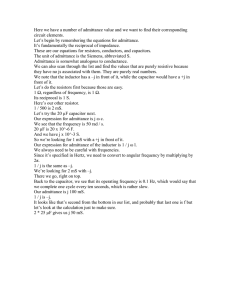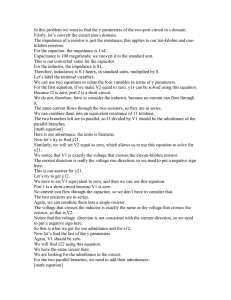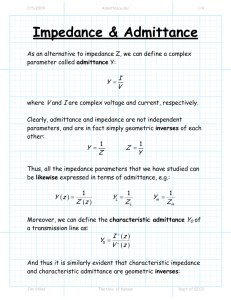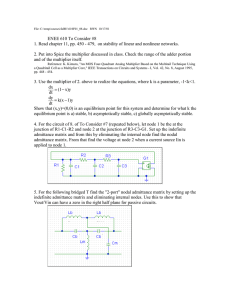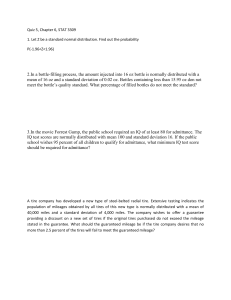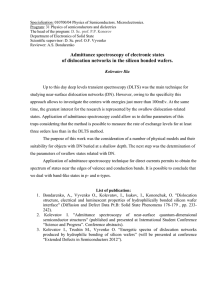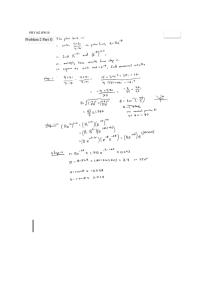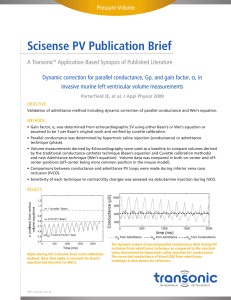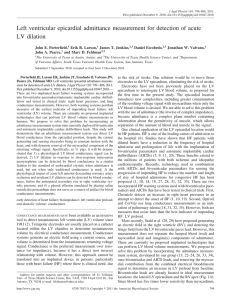Here we have a table of circuit elements and we... elements at various operating frequencies.
advertisement
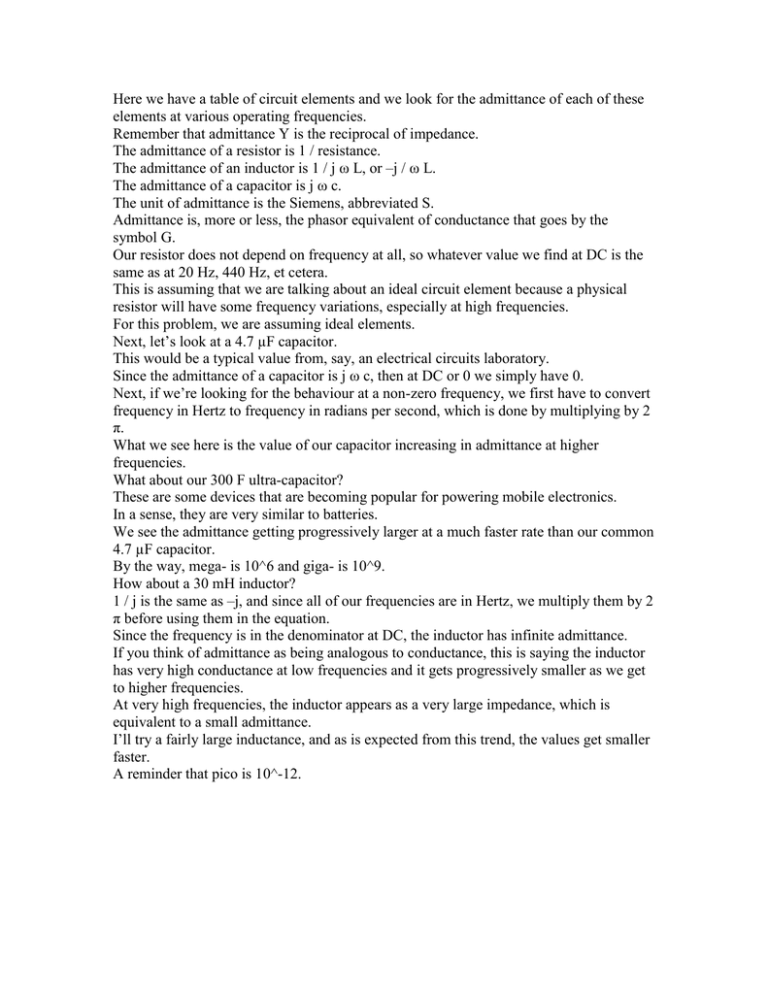
Here we have a table of circuit elements and we look for the admittance of each of these elements at various operating frequencies. Remember that admittance Y is the reciprocal of impedance. The admittance of a resistor is 1 / resistance. The admittance of an inductor is 1 / j ω L, or –j / ω L. The admittance of a capacitor is j ω c. The unit of admittance is the Siemens, abbreviated S. Admittance is, more or less, the phasor equivalent of conductance that goes by the symbol G. Our resistor does not depend on frequency at all, so whatever value we find at DC is the same as at 20 Hz, 440 Hz, et cetera. This is assuming that we are talking about an ideal circuit element because a physical resistor will have some frequency variations, especially at high frequencies. For this problem, we are assuming ideal elements. Next, let’s look at a 4.7 µF capacitor. This would be a typical value from, say, an electrical circuits laboratory. Since the admittance of a capacitor is j ω c, then at DC or 0 we simply have 0. Next, if we’re looking for the behaviour at a non-zero frequency, we first have to convert frequency in Hertz to frequency in radians per second, which is done by multiplying by 2 π. What we see here is the value of our capacitor increasing in admittance at higher frequencies. What about our 300 F ultra-capacitor? These are some devices that are becoming popular for powering mobile electronics. In a sense, they are very similar to batteries. We see the admittance getting progressively larger at a much faster rate than our common 4.7 µF capacitor. By the way, mega- is 10^6 and giga- is 10^9. How about a 30 mH inductor? 1 / j is the same as –j, and since all of our frequencies are in Hertz, we multiply them by 2 π before using them in the equation. Since the frequency is in the denominator at DC, the inductor has infinite admittance. If you think of admittance as being analogous to conductance, this is saying the inductor has very high conductance at low frequencies and it gets progressively smaller as we get to higher frequencies. At very high frequencies, the inductor appears as a very large impedance, which is equivalent to a small admittance. I’ll try a fairly large inductance, and as is expected from this trend, the values get smaller faster. A reminder that pico is 10^-12.
